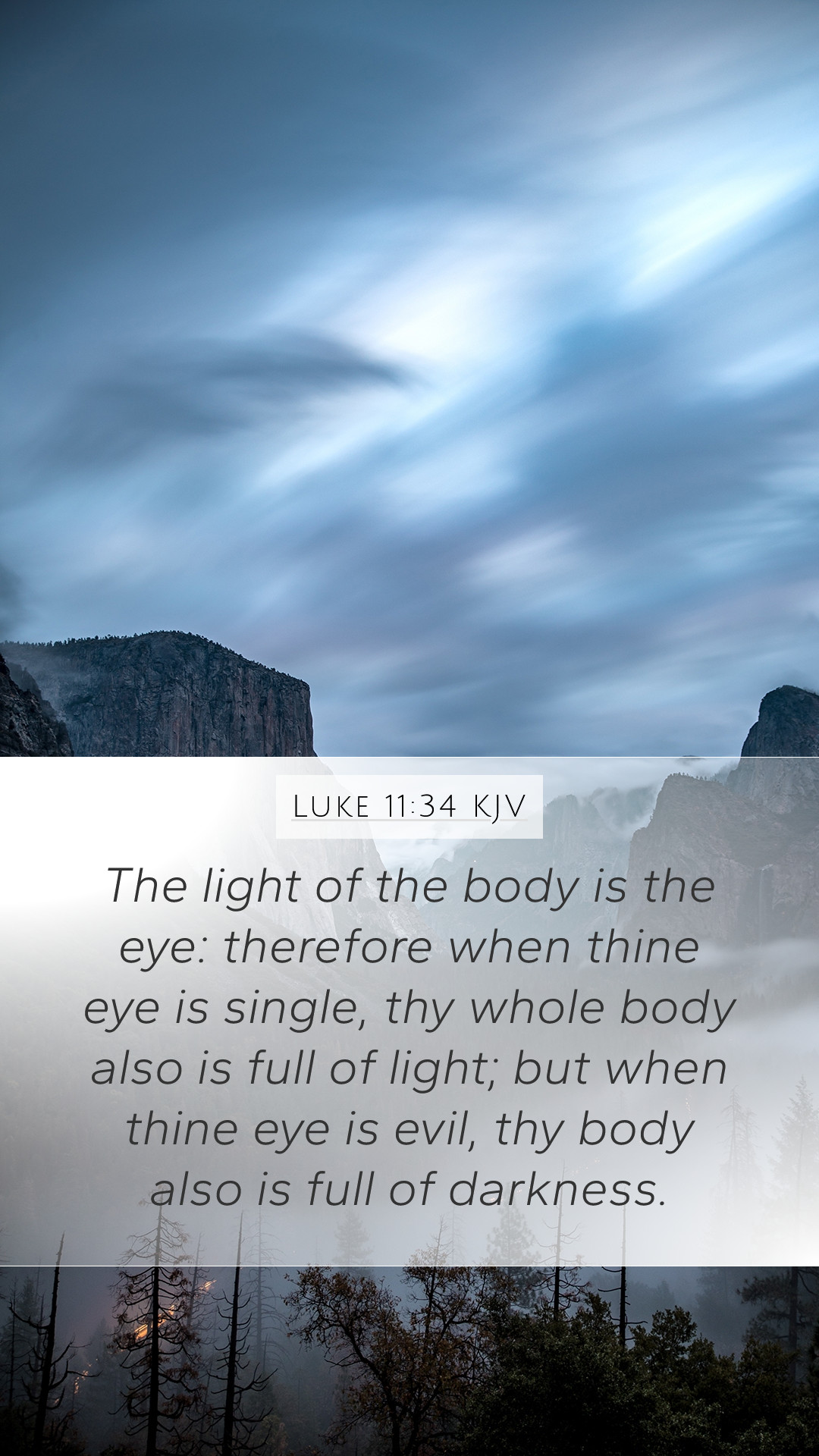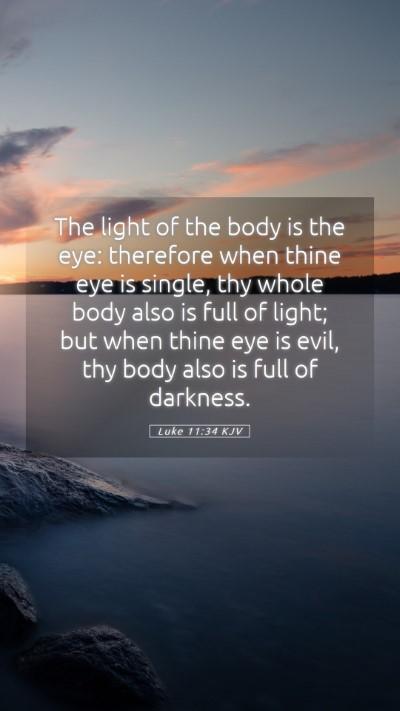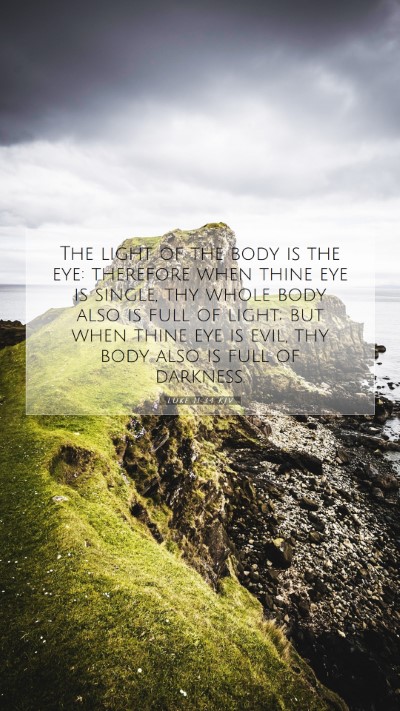Understanding Luke 11:34
Luke 11:34 states, "The lamp of the body is the eye. Therefore, when your eye is good, your whole body also is full of light; but when your eye is bad, your body also is full of darkness." This verse holds profound meaning and implications for our spiritual lives, shedding light on the importance of perception and moral clarity.
Bible Verse Meanings
The essence of Luke 11:34 centers on the eye as a metaphor for our understanding and moral vision. Just as the eye allows light into the body, so too does spiritual insight illuminate our lives. When we perceive the world through a "good eye," or a lens of purity and righteousness, our entire being is filled with the light of truth and goodness.
Bible Verse Interpretations
- Matthew Henry's Commentary: Matthew Henry emphasizes the significance of the eye in perceiving spiritual truth. A well-functioning eye indicates an honest and upright heart, whereas a distorted perception leads to spiritual blindness and moral darkness.
- Albert Barnes' Notes: Barnes interprets this metaphor as a warning against the influences of sin and materialism which distort our vision. He suggests that a healthy perspective aligns with God’s will, enabling us to see and act truthfully.
- Adam Clarke's Commentary: Clarke elaborates on the implications of 'the eye' as representing the will and intentions of the heart. He posits that clarity in understanding God's word leads to a life filled with light, while confusion and sin generate darkness.
Bible Verse Understanding
This verse serves as an introspective tool, encouraging believers to assess the clarity of their spiritual vision. It speaks not only to the consequences of our perceptions but also points towards the necessity of spiritual vigilance. Each individual must ensure that their vision remains focused on righteous paths, reflecting the nature of God.
Bible Verse Explanations
By contrasting a 'good eye' with a 'bad eye,' the verse highlights the dichotomy between enlightenment and ignorance. The illustration of light and darkness calls believers to cultivate a wholesome perspective that fosters spiritual growth and moral integrity.
Scripture Analysis
In analyzing Luke 11:34, it is crucial to consider its context within the Gospel of Luke, which focuses heavily on the teachings of Jesus regarding the nature of true righteousness and the conditions of the heart. This context aids in the understanding of the deeper implications of moral clarity and the influences that shroud our vision.
Biblical Exegesis and Commentary
The analogy of light and dark functions not just as a metaphor but also as a means of examining how external influences can corrupt our understanding. In biblical times, the metaphor of the eye was readily understood by the audience as a representation of perception—both physical sight and spiritual insight.
Bible Study Insights
Engaging with this verse in a Bible study group can yield invaluable insights. Discussions could revolve around personal experiences of seeing through a 'good eye', instances of spiritual blindness, and how one could cultivate a better understanding of God's teachings in their life.
Additional Biblical Cross References
- Matthew 6:22-23: A parallel passage outlining the eye's role as a lamp in relation to one's spiritual state.
- Proverbs 22:9: The eye is linked to generosity and blessing, further enhancing the symbolism in Luke 11:34.
- 2 Corinthians 4:4: Discusses how the god of this age blinds the minds of unbelievers—a direct connection to the themes of spiritual vision in Luke 11.
Conclusion
In conclusion, Luke 11:34 encourages believers to examine the clarity of their vision in relation to their faith and actions. The insights derived from this single verse, supported by public domain commentaries, provide a comprehensive guide to interpreting the verse within the broader narratives of Scripture. This deeper understanding not only enhances personal study but can also guide collective Bible study insights in groups.


